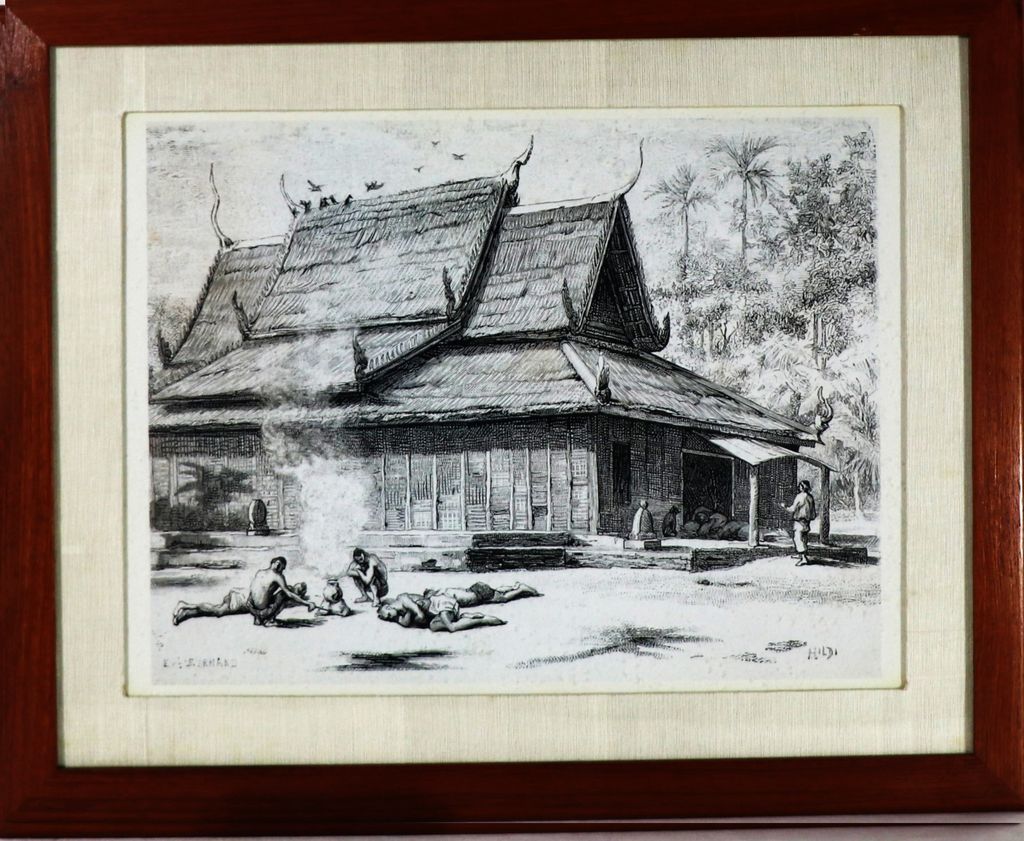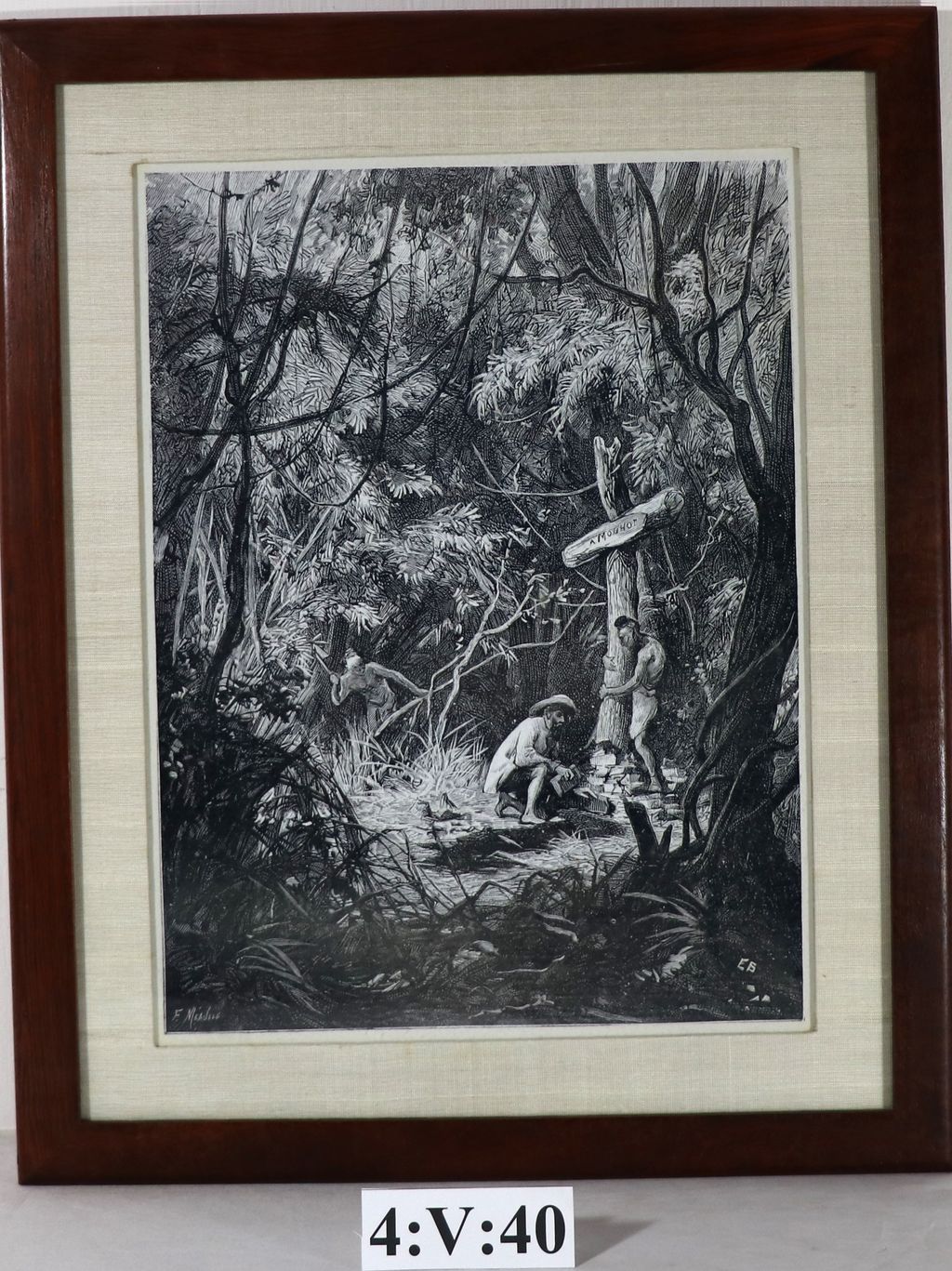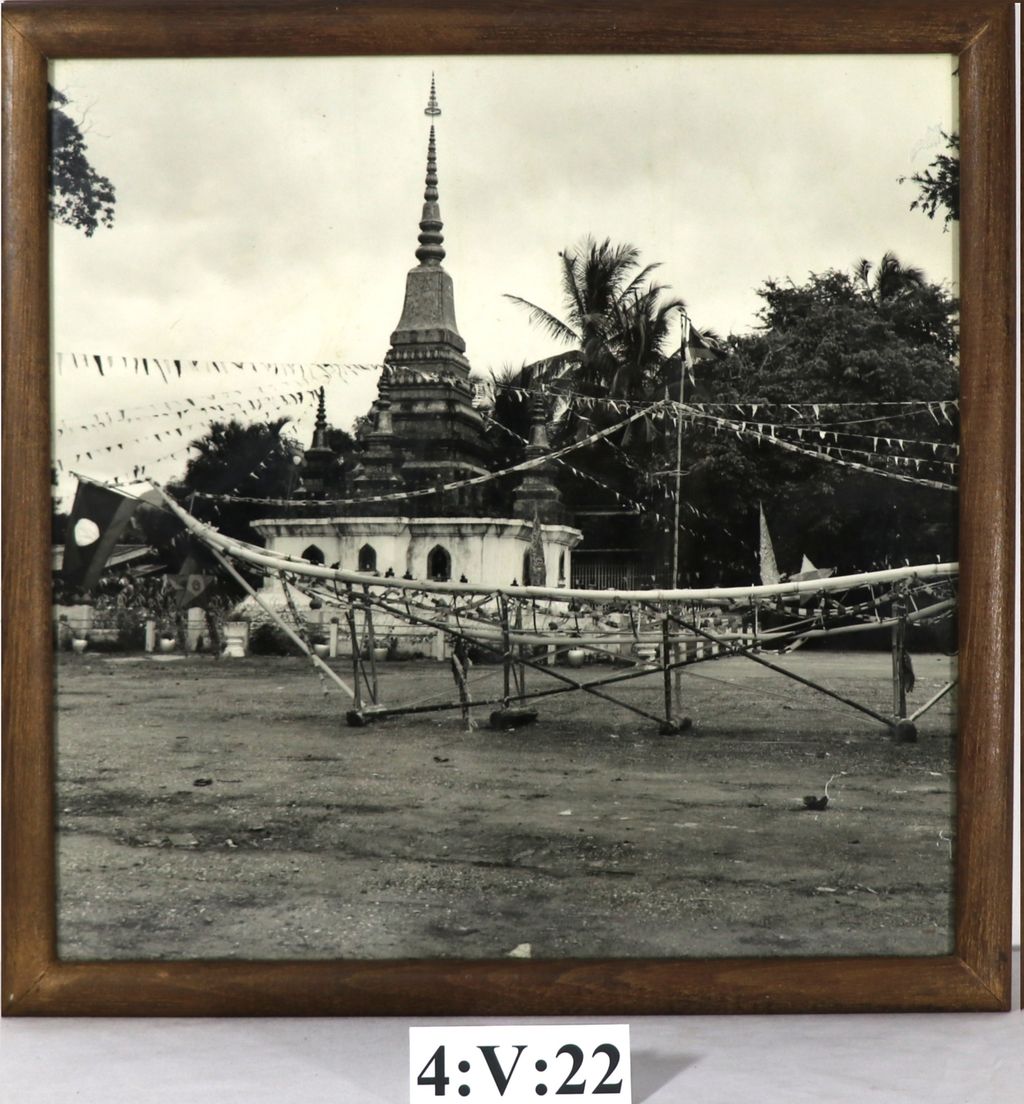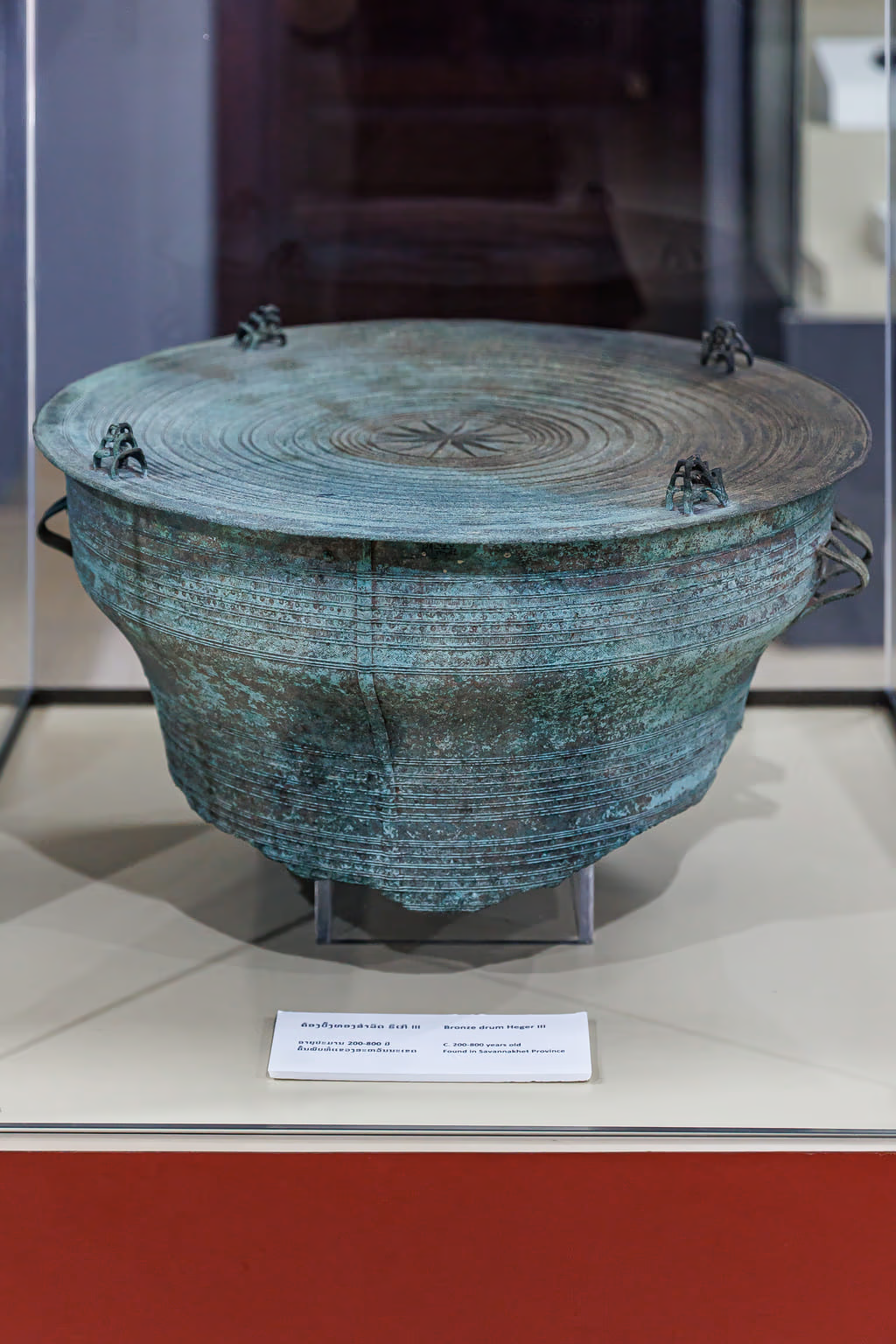ເຊື່ອມໂຍງ ແລະ ອະນຸຮັກລະຫວ່າງອະດີດ ແລະ ອະນາຄົດ
ໃບລານ,ແຄນ ແລະ ສິ່ງຂອງໂບຮານປະຈໍາຊາດ
ເລື່ອງລາວ
ສຳຫລວດເນື້ອຫາຫຼາກຫຼາຍ ແລະ ເລື່ອງລາວທີ່ຢູ່ເບື້ອງຫຼັງຂອງທີ່ຫລັກ, ການຄົ້ນພົບວ່າພວກເຂົາກໍ່ຮ່າງ ແລະ ສະທ້ອນເຖິງວັດທະນະທຳ ແລະ ຕົວຕົນຂອງພວກເຮົາເປັນແນວໃດ.

Natural History
Kuang Si Waterfall: A Natural Wonder of Laos
We explore the beauty of Kuang Si Waterfall in Laos and the experiences it offers to travelers who visit it.

reafla
07 August 2024

Natural History
Luang Prabang
Luang Phabang, (Lao: ຫລວງພະບາງ/ຫຼວງພະບາງ) or Louangphabang (pronounced [lǔaŋ pʰa.bàːŋ]), commonly transliterated into Western languages from the pre-1975 Lao spelling ຫຼວງພຣະບາງ (ຣ = silent r) as Luang Prabang, literally meaning "Royal Buddha Image", is a city in north central Laos, consisting of 58 adjacent villages, of which 33 comprise the UNESCO Town of Luang Prabang World Heritage Site. It was listed in 1995 for unique and "remarkably" well preserved architectural, religious and cultural heritage, a blend of the rural and urban developments over several centuries, including the French colonial influences during the 19th and 20th centuries.

reafla
07 August 2024

Natural History
Vientiane
Vientiane (/viˌɛntiˈɑːn/ vee-EN-tee-AHN,[3] French: [vjɛ̃tjan]; Lao: ວຽງຈັນ, Viangchan, pronounced [wía̯ŋ t͡ɕàn]) is the capital and largest city of Laos. Comprising the five urban districts of Vientiane Prefecture, the city is located on the banks of the Mekong, right at the border with Thailand. Vientiane was the administrative capital during French rule and, due to economic growth in recent times, is now the economic center of Laos. The city had a population of 1,001,477 as of the 2023 Census. Vientiane is the home of the most significant national monuments such as Pha That Luang, a national symbol of Laos and an icon of Buddhism in Laos. Other significant Buddhist temples can be found there as well, such as Haw Phra Kaew, which formerly housed the Emerald Buddha. The city hosted the 25th Southeast Asian Games in December 2009, celebrating 50 years of the games.

reafla
07 August 2024

Natural History
Vang Vieng
Vang Vieng (Lao: ວັງວຽງ, pronounced [wáŋ wía̯ŋ]) is a town in the Vientiane Province in Laos. It is popular with tourists, specifically backpackers, seeking adventure sports as well as its karst topography. It is on the Nam Song River, 130km north of Vientiane (2 hours by car or bus).

reafla
07 August 2024

Natural History
Pha That Luang
Pha That Luang (Lao: ທາດຫຼວງ or ພຣະທາດຫລວງ; pronounced [pʰā.tʰâːt lǔa̯ŋ] 'Great Stupa') is a gold-covered large Buddhist stupa in the centre of the city of Vientiane, Laos.[1] Since its initial establishment, suggested to be in the 3rd century AD, the stupa has undergone several reconstructions as recently as the 1930s due to foreign invasions of the area. It is generally regarded as the most important national monument in Laos and a national symbol.

reafla
07 August 2024

Natural History
Wat Xieng Thong
Wat Xieng Thong (Lao: ວັດຊຽງທອງ, pronounced [wāt síaŋ.tʰɔ́ːŋ]; "Temple of the Golden City") is a Buddhist temple (vat or wat) on the northern tip of the peninsula of Luang Prabang, Laos.[1]: 264 Built between 1559 and 1560 by King Setthathirath, Wat Xieng Thong is one of the most important of Lao monasteries and remains a significant monument to the spirit of religion, royalty and traditional art.

reafla
07 August 2024

Warfare-related
Patuxai
Patuxai (Lao: ປະຕູໄຊ; literally Victory Gate or Gate of Triumph, formerly the Anousavary or Anosavari Monument, known by the French as Monument Aux Morts) is a war monument in Downtown Vientiane, Laos, built between 1957 and 1968. The Patuxai was dedicated to those who fought in the struggle for independence from France. In romanizing the name from the Laotian language, it is variously transliterated as Patuxai, Patuxay, Patousai and Patusai. It is also called Patuxai Arch or the Arc de Triomphe of Vientiane as it resembles the Arc de Triomphe in Paris. However, it is typically Laotian in design, decorated with mythological creatures such as the kinnari (half-female, half-bird).

reafla
07 August 2024

Natural History
Phou Si
Mount Phou Si, also written Mount Phu Si, is a 100 m (328 ft) high hill in the centre of the old town of Luang Prabang[1] in Laos. It lies in the heart of the old town peninsula and is bordered on one side by the Mekong River and on the other side by the Nam Khan River. The hill is a local religious site, and houses several Buddhist shrines. Halfway up the hill, overlooking the Nam Khan is Wat Tham Phou Si, a Buddhist temple. At the summit of the hill, overlooking the town and surrounding countryside, is Wat Chom Si, which is also a Buddhist temple and is a tourist highlight of Luang Prabang. Entrance to Phou Si is 20,000 Kip as of July 2018

reafla
07 August 2024

Buddha Statue
Buddha Park
Buddha Park, also known as Xieng Khuan (as well as other variations of the spelling), is a sculpture park 25 km southeast from Vientiane, Laos in a meadow by the Mekong River.[1][2] Although it is not a temple (Wat), it may be referred to as Wat Xieng Khuan (Lao: ວັດຊຽງຄວນ;Thai: วัดเซียงควน) since it contains numerous religious images.[3] The name Xieng Khuan means Spirit City.[2] The park contains over 200 Hindu and Buddhist statues.[4] The socialist government operates Buddha Park as a tourist attraction and public park.

reafla
07 August 2024

Natural History
Vat Phou
Vat Phou (or Vat Phu; Lao: ວັດພູ [wāt pʰúː] temple-mountain) is a ruined Khmer Hindu temple complex in southern Laos and one of the oldest places of worship in Southeast Asia. It is at the base of mount Phou Khao, some 6 kilometres (3.7 mi) from the Mekong in Champasak Province. There was a sanctuary on the site centred on a sacred spring and an offering place for a mighty tutelary sprit dating back to pre-historic times. The first megalithic stone structures had been built probably as early as the second century BCE, consisting of two stone cells, a carving of a crocodile, a serpent stairs and several offering platforms.[1] One of the first pre-Angkor brick buildings onsite was erected in the early 7th century and became the focus of all consequent building activities.[1] Most of the other surviving buildings date from the Angkor period in the 11th to 13th centuries.

reafla
07 August 2024

Natural History
Plain of Jars
The Plain of Jars (Lao: ທົ່ງໄຫຫິນ Thong Hai Hin, [tʰōŋ hǎj hǐn]) is a megalithic archaeological landscape in Laos. It consists of thousands of stone jars scattered around the upland valleys and the lower foothills of the central plain of the Xiangkhoang Plateau. The jars are arranged in clusters ranging in number from one to several hundred.[1] The Xiangkhoang Plateau is at the northern end of the Annamese Cordillera, the principal mountain range of Indochina. French researcher Madeleine Colani concluded in 1930 that the jars were associated with burial practices. Excavation by Lao and Japanese archaeologists in the intervening years has supported this interpretation with the discovery of human remains, burial goods and ceramics around the jars. Researchers (using optically stimulated luminescence) determined that the jars were put in place as early as 1240 to 660 BC.[2] The jars at Site 1 (using detrital zircon geochronology) were determined to have been transported to their current location from a presumed quarry eight kilometers away.[2] The Plain of Jars is one of the most important prehistoric sites in Southeast Asia.

reafla
07 August 2024

Buddha Statue
Pak Ou Caves
Near Pak Ou (mouth of the Ou river) the Tham Ting (lower cave) and the Tham Theung (upper cave) are caves overlooking the Mekong River, 25 km to the north of Luang Prabang, Laos. They are a group of two caves on the west side of the Mekong river, about two hours upstream from the centre of Luang Prabang, and are frequently visited by tourists.

reafla
07 August 2024
ແຟ້ມເກັບຮັກສາ
ສຳຫລວດເນື້ອຫາຫຼາກຫຼາຍ ແລະ ເລື່ອງລາວທີ່ຢູ່ເບື້ອງຫຼັງຂອງທີ່ຫລັກ, ການຄົ້ນພົບວ່າພວກເຂົາກໍ່ຮ່າງ ແລະ ສະທ້ອນເຖິງວັດທະນະທຳ ແລະ ຕົວຕົນຂອງພວກເຮົາເປັນແນວໃດ.

Artifact
ຮູບພາບມີຄົນອາໃສຢູ່ໃນວັດ ປີ1885
ວັດທີ່ມີຄົນອາໃສຢູ່ໃນນັ້ນມີສະທຸ, ອ້າຍຈົວ, ປະຊາຊົນກໍາລັງດັງໄຟສອງຄົນແລະນອນຢູ່ເດີ່ນວັດສາມຄົນ ປີ1885




Artifact
ທ່ານ ລັດຖະມົນຕີ ແຫ່ງເຢຍລະມັນນີພ້ອມຄະນະເຂົ້າຢ້ຽມຢາມທ່ານ ໜູຮັກພູມສະຫວັນ ປະທານປະເທດແຫ່ງ ສປປ ລາວ ທີ່ ຫໍຄຳ, ນະຄອນຫຼວງວຽງຈັນ
ເປັນຮູບຖ່າຍສີໃນຮູບສັງເກດເຫັນ ທ່ານ ໜູຮັກ ພູມສະຫວັນ ພ້ອມດ້ວຍຄະນະນຳລາວຢືນຖ່າຍຮູບຮ່ງມກັນກັບລັດຖະມົນຕີສະຫະພເຢຍລະມັນພ້ອມດ້ວຍຄະນະແຕ່ລະທ່ານແຕ່ງໂຕສຸພາບໃນນັ້ນມີຍິງຊາວເຢຍລະມັນນີສອງທ່ານ, ດ້ານຫຼັງມີໄມ້ເກະສະຫຼັກເປັນຮູບເຄື່ອງໝາຍຊາດ

Artifact
ການສົ່ງເສີມການລ້ຽງໄກ່ພັນໃຫ້ແກ່ປະຊາຊົນເຂດເມືອງ ແລະ ຊົນນະບົດ
ການສົ່ງເສີມການລ້ຽງໄກ່ພັນໃຫ້ແກ່ປະຊາຊົນເຂດເມືອງ ແລະ ຊົນນະບົດ

Artifact
ການລ້ຽງປາແບບທຳມະຊາດຂອງປະຊາຊົນໃນເຂດນະຄອນຫຼວງວຽງຈັນ
ເຈົ້າຂອງໜອງປາ ຈັບປາເພື່ອໄປປຸງແຕ່ງເປັນອາຫານ ແລະ ຈຳໜ່າຍໃຫ້ແກ່ປະຊາຊົນຜູ້ທີ່ຕ້ອງການປາລ້ຽງແບບທຳມະຊາດ

Artifact
ຜະລິດຕະພັນຈາກບໍລິສັດຜະລິດຕະພັນເບຕົງລາວ
ການເຄື່ອນຍ້າຍເສົາໄຟ້າຂອງບໍລິສັດຜະລິດຕະພັນເບຕົງລາວ

Artifact
ການສັກຢາປ້ອງກັນພະຍາດເຕົ້າໂຮມໃຫ້ແກ່ສັດຈຳພວກ ງົວ, ຄວາຍ
ການສັກຢາປ້ອງກັນພະຍາດເຕົ້າໂຮມໃຫ້ແກ່ສັດຈຳພວກ ງົວ, ຄວາຍ

Artifact
ບັນດາທ່ານເຈົ້າແຂວງ, ທ່ານລັດຖະມົນຕີພ້ອມຜູ້ຕ່າງໜ້າບັນດາກະຊວງເຂົ້າຮ່ວມກອງປະຊຸມແຜນການ ແລະ ການຮ່ວມມືທົວປະເທດ 31/7-3/8/2001
ບັນດາທ່ານເຈົ້າແຂວງ, ທ່ານລັດຖະມົນຕີພ້ອມຜູ້ຕ່າງໜ້າບັນດາກະຊວງເຂົ້າຮ່ວມກອງປະຊຸມແຜນການ ແລະ ການຮ່ວມມືທົວປະເທດ 31/7-3/8/2001

Artifact
ໂຮງງານສີມັງລາວວັງວຽງ
ໂຮງງານສີມັງລາວວັງວຽງເປັນໂຮງງານທີ່ໃຫຍ່ສາມາດຜະລິດສີມັງປີໜຶ່ງລ້ານໂຕນ

ການນິດສະການ
ສຳຫຼວດນິທັດທີ່ສະແດງເຄື່ອງປະດັບທີ່ເຜີຍເຖິງປະຫວັດສາດທີ່ລະອຽດແລະຄວາມສຳຄັນທາງວັດທະນະທຳພາຍໃນສັງຄົມຂອງພວກເຮົາ.

Natural History
Online Exhibition of the Vat Phou Champasak Ruins and the Excavation of Hong Nang Sida
The Vat Phou - Champasak site lies on fertile alluvial plains on the banks of the Mekong River, and its mountainous core is the eastern outlier of the Dângrêk Range, which is home to the Phou Kao Mountains that rise up to an altitude of 1,416 meters.

유다연
20 August 2024

Natural History
Lao-Korea Cooperation Project : Hong Nang Sida Temple
Since 2013, the Cultural Heritage Administration and the Korea Cultural Heritage Foundation have been working on a heritage restoration project at the World Heritage Site “Vat Phou and Associated Ancient Settlements within the Champasak Cultural Landscape” in Lao PDR. The project focuses on restoring the collapsed stone structure called Hong Nang Sida, located in the southern part of the Vat Phou Temple Complex. This site, also known as the “Temple of Princess Sida,” is gradually regaining its original appearance thanks to the ongoing restoration efforts by a Korean research team.

유다연
16 August 2024

Natural History
Sacred River
The archaeological site of the ancient city is situated on the plains adjacent to the Mekong River. The city was surrounded by two layers of brick and earthen ramparts, with a moat in between. These ramparts measured approximately 2.4 km from north to south and 1.8 km from east to west, with the best-preserved sections standing up to 6 meters high and 14 meters thick. The walls and moats were likely constructed to manage and utilize the waters from the Phou Kao Mountains' tributaries.

유다연
16 August 2024

Natural History
Vat Phou-Champasak Site Exploration Itinerary
The pilgrimage journey from the World of Humans to the World of Saints, the World of Gods, and the World of Emptiness

유다연
14 August 2024

Natural History
Natural Landscape of the Vat Phou-Champasak Site
Ancient City Ruins within the Vat Phou-Champasak Site

유다연
14 August 2024


유다연
14 August 2024

Natural History
The ancient sanctuary of the Khmer Empire, Vat Phou-Champasak
The official UNESCO designation is "Vat Phou and Associated Ancient Settlements within the Champasak Cultural Landscape."

유다연
07 August 2024
ສຳຫວດຕາມຫົວຂໍ້
ສຳຫຼວດບັນທຶກແລະເລື່ອງຕ່າງໆຕາມຮູບແບບ

ຫົວຂໍ້
ຮູບແບບຕ່າງໆ
ສຳຫຼວດເລື່ອງລາວແລະປະຫວັດຫຼັງວັດຖຸຕ່າງໆ, ແລະຄົ້ນພົບວ່າພວກມັນສ້າງແລະສະທ້ອນວັດທະນະທຳແລະອັດລັກຂອງພວກເຮົາແນວໃດ.

ເປັນຄົນທຳອິດທີ່ເຫັນຂ່າວ
ເຈົ້າສາມາດຮັບຂໍ້ມູນກ່ຽວກັບວັດຖຸທາງວັດທະນະທຳ, ເນື້ອຫາ, ແລະຂ່າວສານຕ່າງໆຂອງລາວ.


















